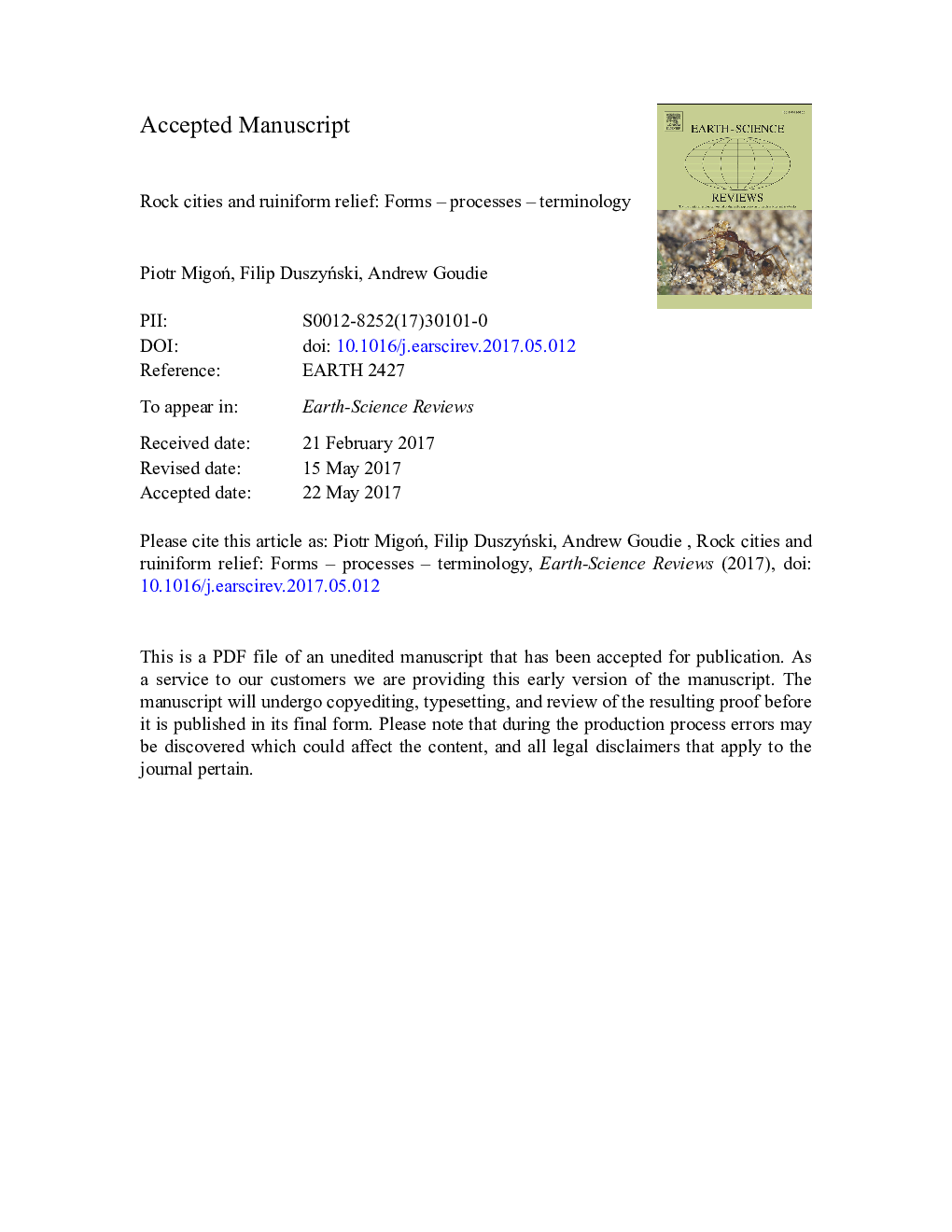| Article ID | Journal | Published Year | Pages | File Type |
|---|---|---|---|---|
| 5785079 | Earth-Science Reviews | 2017 | 91 Pages |
Abstract
Spectacular rock-cut landscapes consisting of closely spaced residual rock blocks separated by narrow intersecting corridors are variously termed as 'rock cities' and 'ruiniform relief'. The former term has apparently never been formally defined except in the local Czech literature, whereas the latter was applied in various contexts, making the terminology confusing. This paper provides a global overview of forms, processes and controls behind such rock city/ruiniform landscapes and develops geomorphological terminology for such rock-cut landscapes, including the proposal that 'rock city' becomes a legitimate scientific term. Rock cities and ruiniform relief are two different types of rock erosional morphology, typified by the presence of a 'street pattern' in the former and highly weathered surfaces of rock residuals in the latter, although there is some overlap between the two. Examples of rock cities or ruiniform relief may be found in different lithologies and in a wide range of climates, from hyper-arid to humid. Classic localities include northern Czechia and adjacent parts of Poland and Germany, Australia, central Sahara, and the Gran Sabana in Venezuela. Lithologies particularly suitable to the development of this type of erosional morphology include mainly sandstones, followed by limestones, dolomites, conglomerates, tuffs, but igneous rocks such as granites or rhyolites are also known to support this type of relief. The combination of sufficient rock strength to support steep rock faces and the presence of discontinuities which, preferentially eroded, turn to 'streets' and 'squares' in the rock cities, appears as the basic prerequisite. A wide range of processes are involved in their formation, including surface and subsurface weathering, mass movements, salt tectonics, karst processes in both carbonate and silicate rocks, piping, fluvial erosion and aeolian abrasion. Despite being spectacular landscapes, very few models of long-term evolution of rock city and ruiniform relief have been presented in the literature and it is unlikely that any one scenario would apply to all situations. Rather, rock cities are examples of geomorphological convergence.
Related Topics
Physical Sciences and Engineering
Earth and Planetary Sciences
Geology
Authors
Piotr MigoÅ, Filip DuszyÅski, Andrew Goudie,
